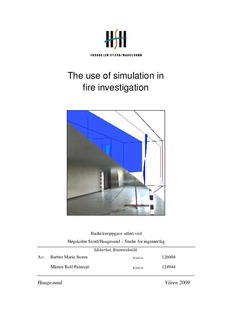The use of simulation in fire investigation
Bachelor thesis
Permanent lenke
http://hdl.handle.net/11250/151874Utgivelsesdato
2009Metadata
Vis full innførselSamlinger
Sammendrag
Data from a full-scale test of temperature and smoke spread, in a realistic multi-room setting, was used to verify simulations done in the computer programs CFAST and FDS. A closely corresponding HRR-curve was used in the programs. It was found that data from the top 0,5m of the full-scale test could be compared with reasonable accuracy to both simulation models. This would make simulations, used in fire investigation, more easily comparable to real life cases as the highest temperatures in each room could be compared to a probable fire cause. The simulations were found to provide satisfying results in CFAST, as an alternative to FDS. With CFAST it was also found that close to a fire, in a geometrically complicated room, a more detailed model would be better suited. Outside the initial room the critical factor would be to cut down on the sections to as few as possible. A sensitivity analysis was performed with both programs for the quality of the work, and as example for future usage. A cone calorimeter test was performed on the ceiling, due to uncertainties about its possible contribution to the total fire load. Differences and similarities between the simulations and the full-scale test, as well as critical factors for success are discussed.
